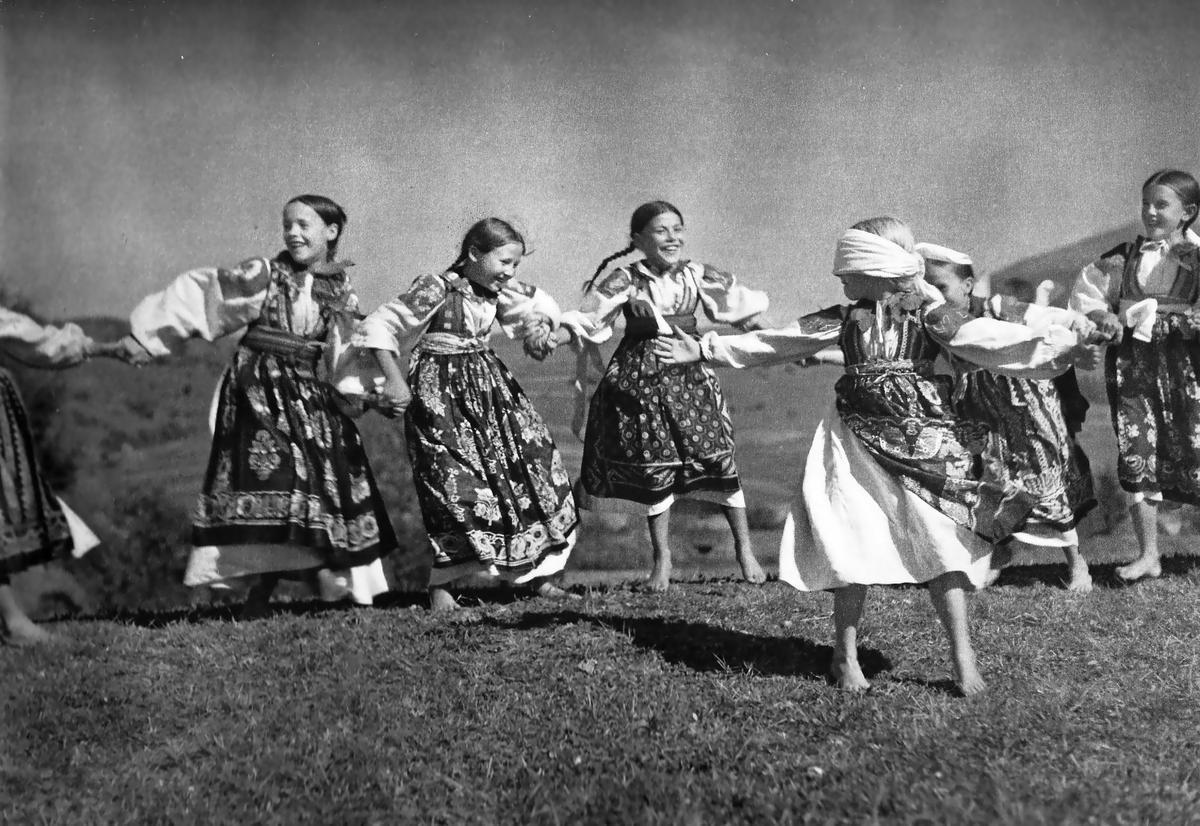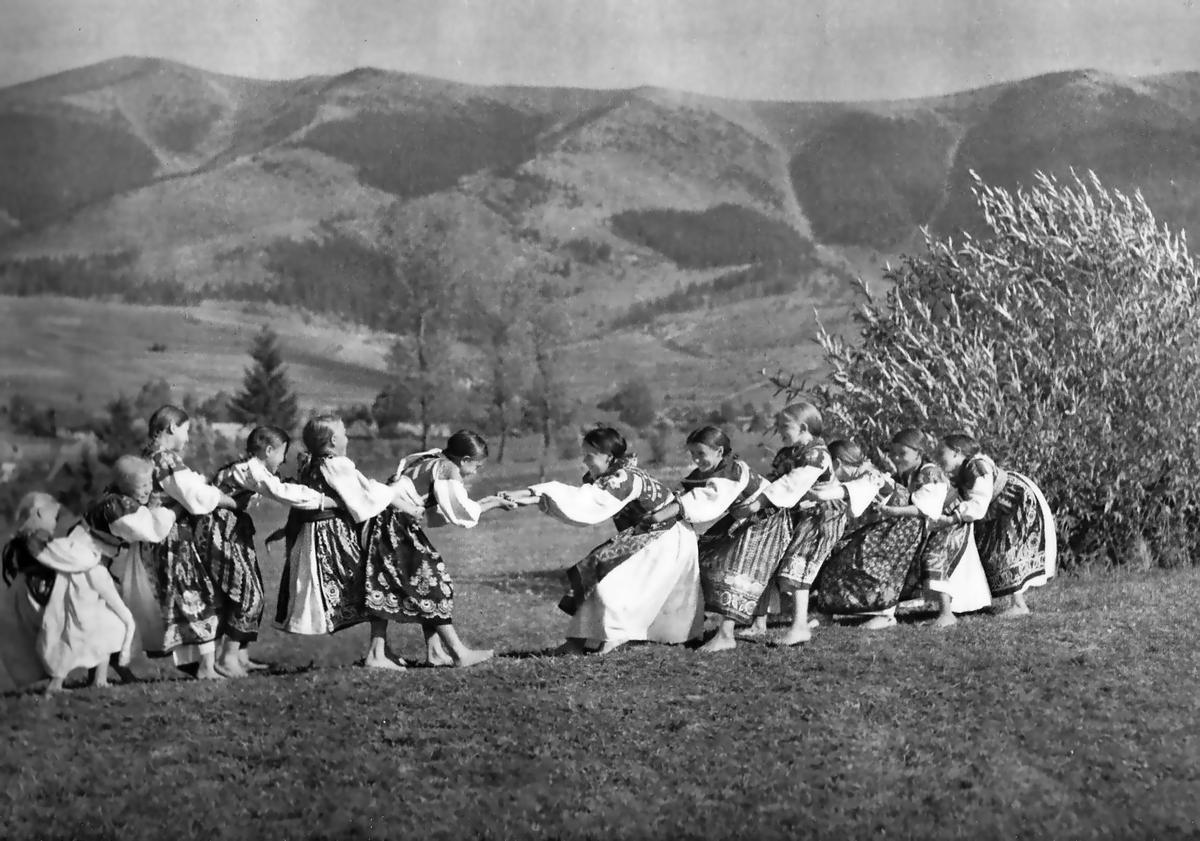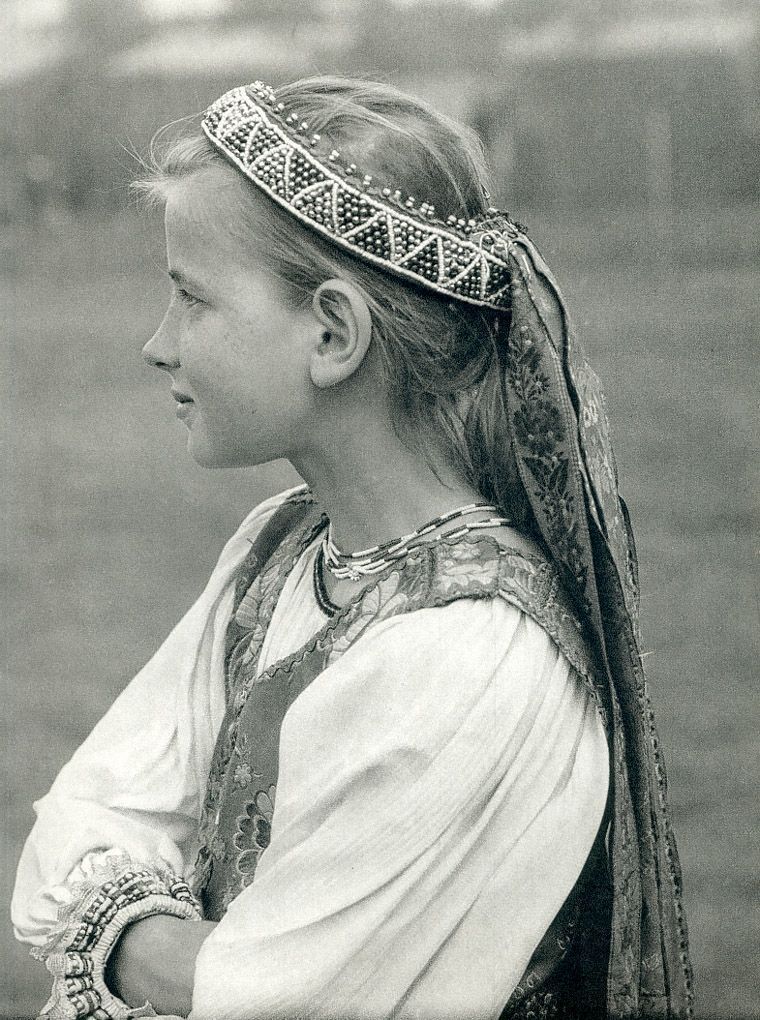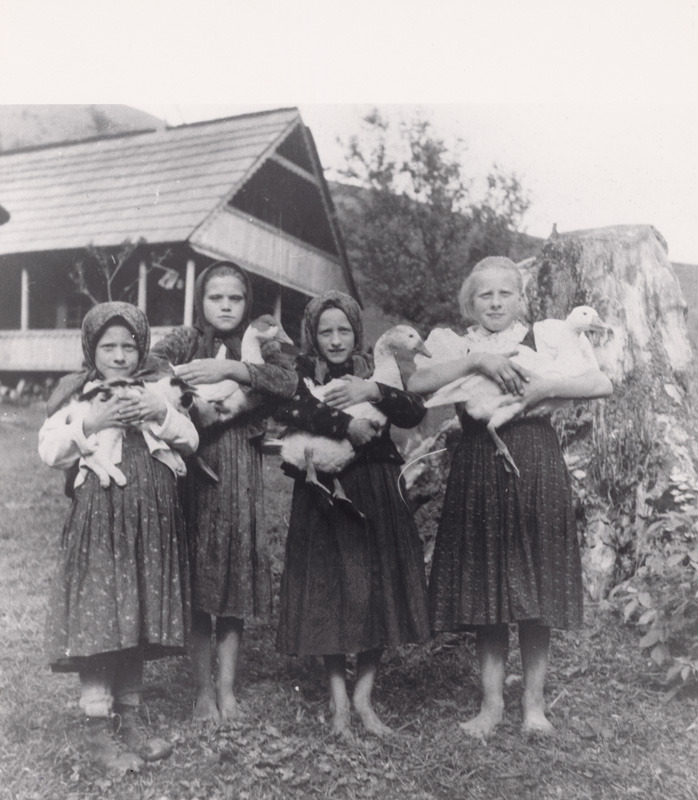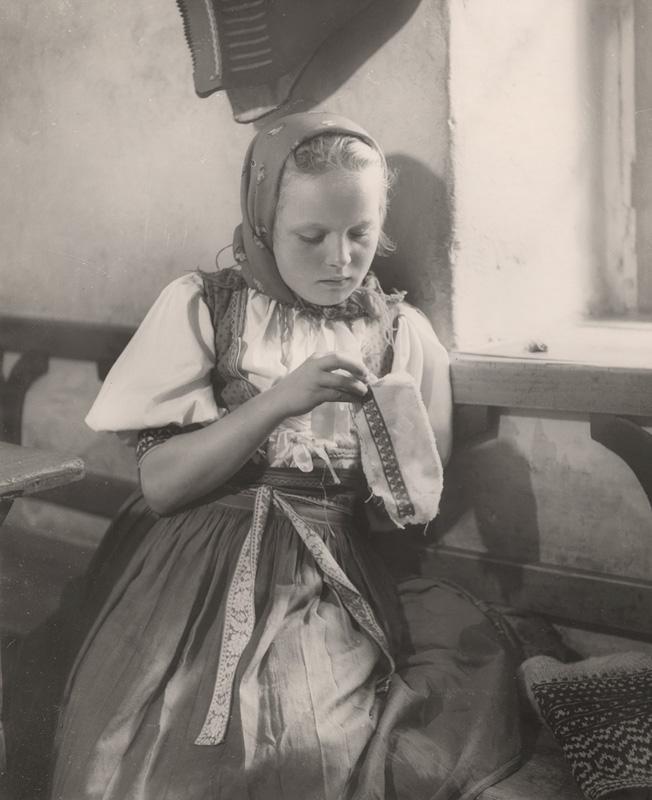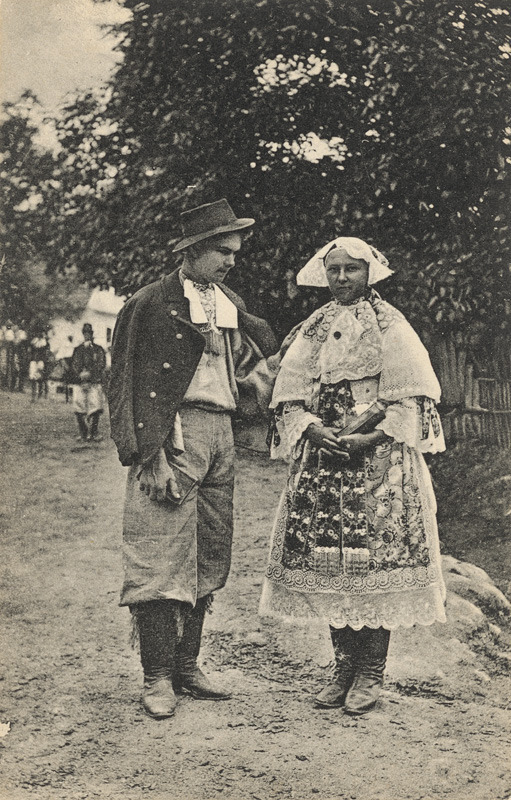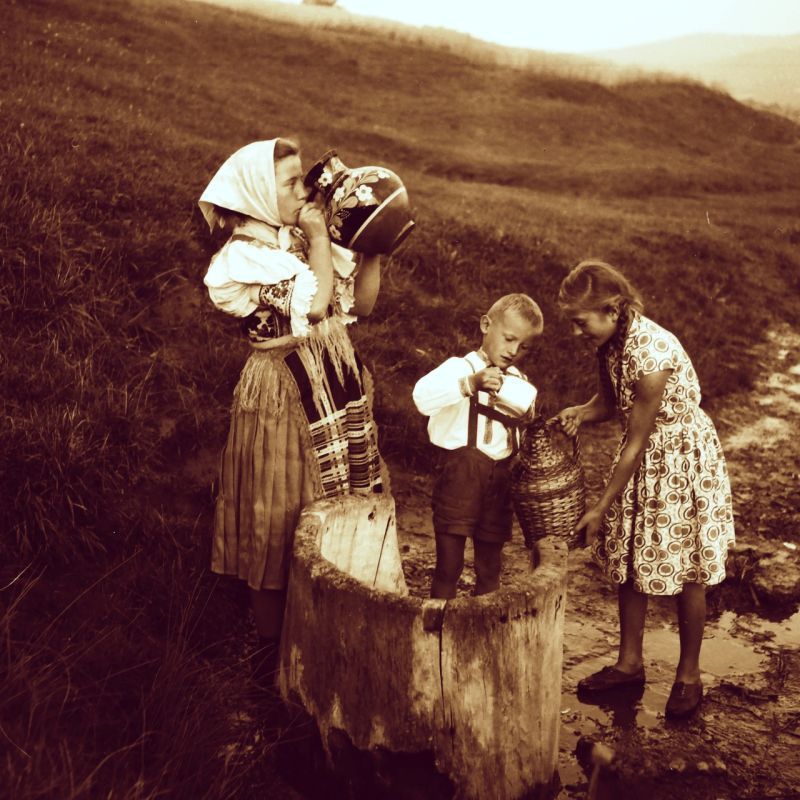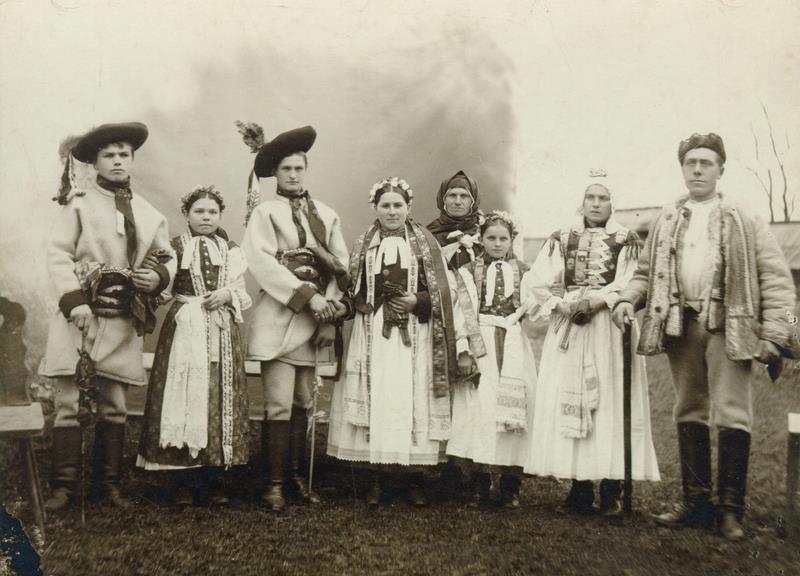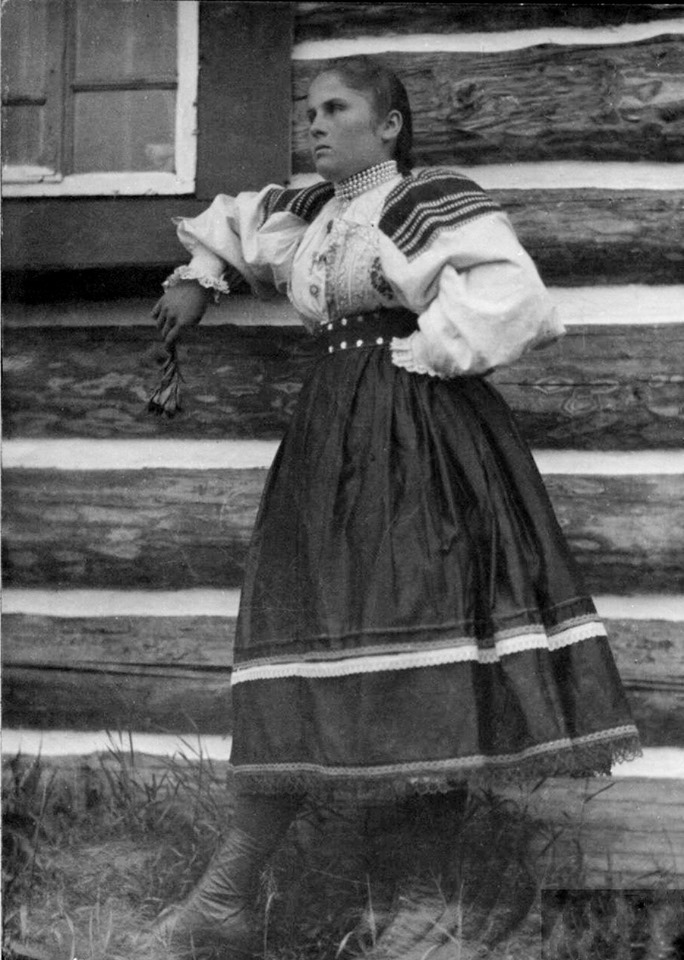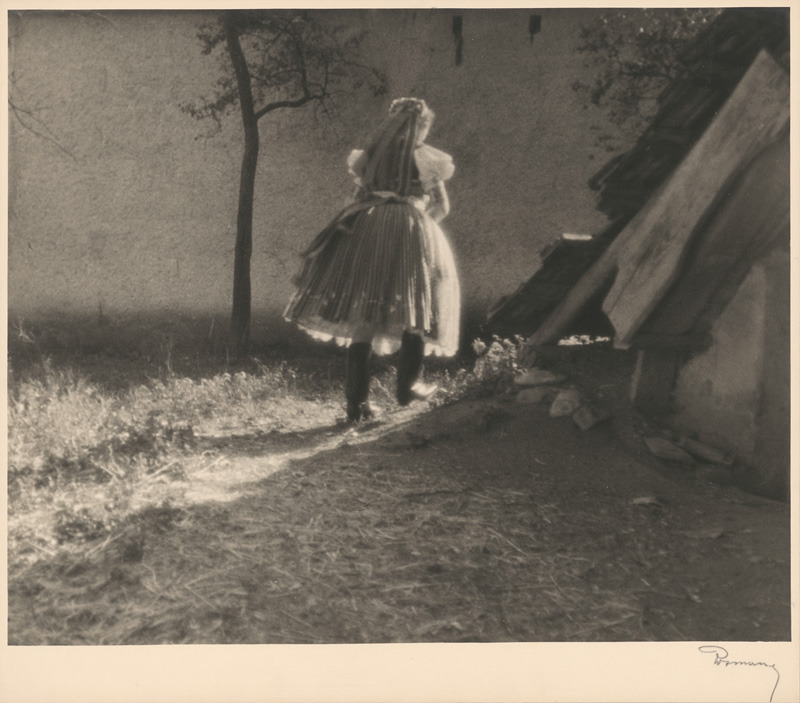 Marianne Stokes, Young Girl of Zsdjar in Sunday Clothes, 1909
Marianne Stokes, Young Girl of Zsdjar in Sunday Clothes, 1909
English painter Adrian Stokes and his Austrian-born wife Marianne Stokes (born as Marianne Preindlsberger) loved to paint and travel and in 1905 they made their first journey to Hungary, then part of the grand yet decaying Austria-Hungarian Empire. They traveled throughout the villages and wilderness, soaking in the beauty of nature and reveling in the richness and vibrancy of the diverse cultures in such a small geographical area. They used what they saw to fuel their artistic imagination and they captured the last shine of the Empire which collapsed soon afterwards, at the outbreak of the First World War.
While Adrian focused mostly on portraying the beauty of the landscapes, small cottages, meadows and poplar trees, his wife Marianne focused on capturing the local people with their interesting faces and vibrant traditional clothes. They returned to Hungary again in 1907 and 1908, and in October of 1909 Adrian published a book about their travels titled simply “Hungary” which is accompanied by the illustrations of both of them. The book was a fantastic read. It was truly a window into the lost world and forgotten world, veiled in nostalgia and dreams. I am not saying that Adrian romanticised their travels, no, he was quite perceptive and realistic, but in contrast to how things are today, I cherish the tradition that still existed in those days, a world before modernisation. Nowadays you couldn’t recongnise the people in the villages by the different clothes they wear, girls wouldn’t be dressed in those beautiful clothes, they would all be wearing jeans and t-shirt like the rest of the Europe.
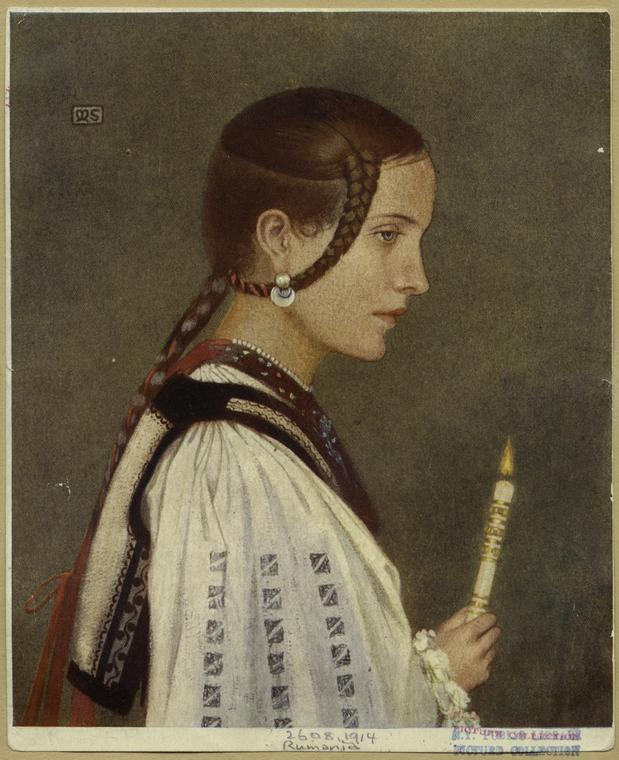
Marianne Stokes, A Rumanian Bridesmaid, 1905
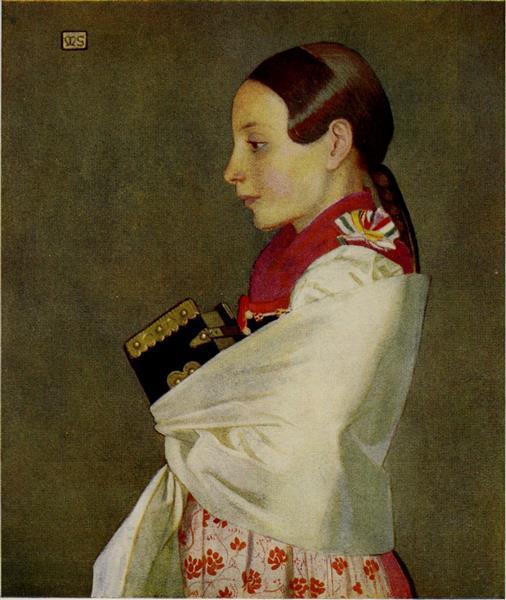
Marianne Stokes, Young Girl of Menguszfal Going to Church, 1909
Now let me give you a little outline of their journey so you can drew yourself a map in your head; they started in Marianne’s homeland Austria, travelled over Orsova to a Slovak village Vazsecz, Lucsivna-Furdo, a Hungarian cathedral town Kalocsa, across Croatia to a seaside town called Fiume, they also visited Zsdjar, Desze, Budapest, Bacs, Lake Balaton and of course Transylvania. Although people in the villages were generally nice to the painterly couple, it proved to be difficult to find peasants who would sit and be models for Marianne. How funny, in some instances it would be considered glamorous and desirable to be an artist’s model and muse, but these peasant girls couldn’t care less about it, they lead their own happy lives not even knowing what art movements are being made miles and miles away in Paris and Vienna. Here is what Adrian writes about this model-finding-problem:
“Models being so difficult to obtain in Csorba-to, we determined to explore the villages down below —useless, everyone said, as it was quite impossible for civilized beings to stay there. However, we had tried the highly recommended places, from Lomnicz, * Pearl of the Tatra,’ onwards, without finding what we sought, and felt inclined to take the bit in our teeth and break away from convention on our own account. On learning our intention, the landlord most kindly gave us an introduction to three ladies living in the village of Vazsecz, and there we went on the Feast of SS. Peter and Paul. We arrived during service in the Calvinist church, and waited about to see the people leave. When they did we could hardly believe our eyes, so strange and charming were they. Had we been in China or Tibet, nothing more surprising could have appeared.
The women and girls, tall and slim, wore short, clinging, many-pleated skirts—generally of indigo colour, with a pale yellow pattern on them—which reached just below their knees ; top boots, black or white ; bright bodices ; and hugely puffed-out white linen sleeves. Their pretty caps were hidden under gaily coloured handkerchiefs, round their necks were multitudes of beads, and each carried a large prayer-book with metal clasps and a little nosegay of scented herbs. They stood in groups, amused that we should look at them, and then, like timid animals, ran away.”

Marianne Stokes, Misko, 1909
I would love to know the background about the people that Marianne portrayed but unfortunately, most of these “exotic” and lovely girls remain mysterious and anonymous, their names, characters and lives were not recorded for the history even though their intricate clothes were captured on canvas, but here is a painting of an amiable blue-eyed boy called Misko and Adrian wrote a little bit about him in his book:
“Among my wife’s models was a boy named Misko—a dear little fellow nine or ten years old. Babyhood seemed still to linger about his eyes and mouth, but in spirit he was a labourer and a politician, as the red feather in his hat proclaimed him. Misko was amiable when not asked to sit. He underwent the martyrdom of posing twice, but nothing would induce him to come again. He willingly consented, however, to be our guide for four or five miles over the hills to the Black Vag, where we were going for a day’s fishing, and a gallant little cavalier he was! He spread branches and leaves in wet places for my wife to walk over, and offered his help at every difficulty on her path. At lunch, when we had given him a share of our cold chicken, he remained quietly at a little distance until he had unwrapped his own food, consisting of bread and a thick piece of bacon. He then cut the best part out of the middle of the bacon and came to offer it to us. My wife found it a joy to be with him, and I was able to proceed with my fishing without feeling that she was neglected.”

Marianne Stokes, Slovak Girl in Sunday Attire, 1909
Here’s another description of a Slovak girl and her attire: “How pleasingly different was the spotless appearance of the Slovak girl who burst into our room each morning without knocking, her feet bare, her neck glistening with beads, and in her hands wooden pails full of sparkling water! Every day it seemed a fresh surprise for her that we could not speak the language with which she was familiar, and she would show two rows of exquisitely white teeth in smiles which seemed to express pity combined with wonder.” All in all, I can say that Marianne beautifully captured the girls and their clothes in world now lost, and these paintings are not only an artistic achievement but are also valuable for ethnology. I must also note that the dates give to paintings are not entirely accurate, but more approximate, but that isn’t a problem in this case. I really love the “Rumanian Bridesmaid” girl painted from the profile and holding a candle, and the Rumanian girl with a garlic-necklace captivates me as well, probably because of her red hair. Which one is your favourite?
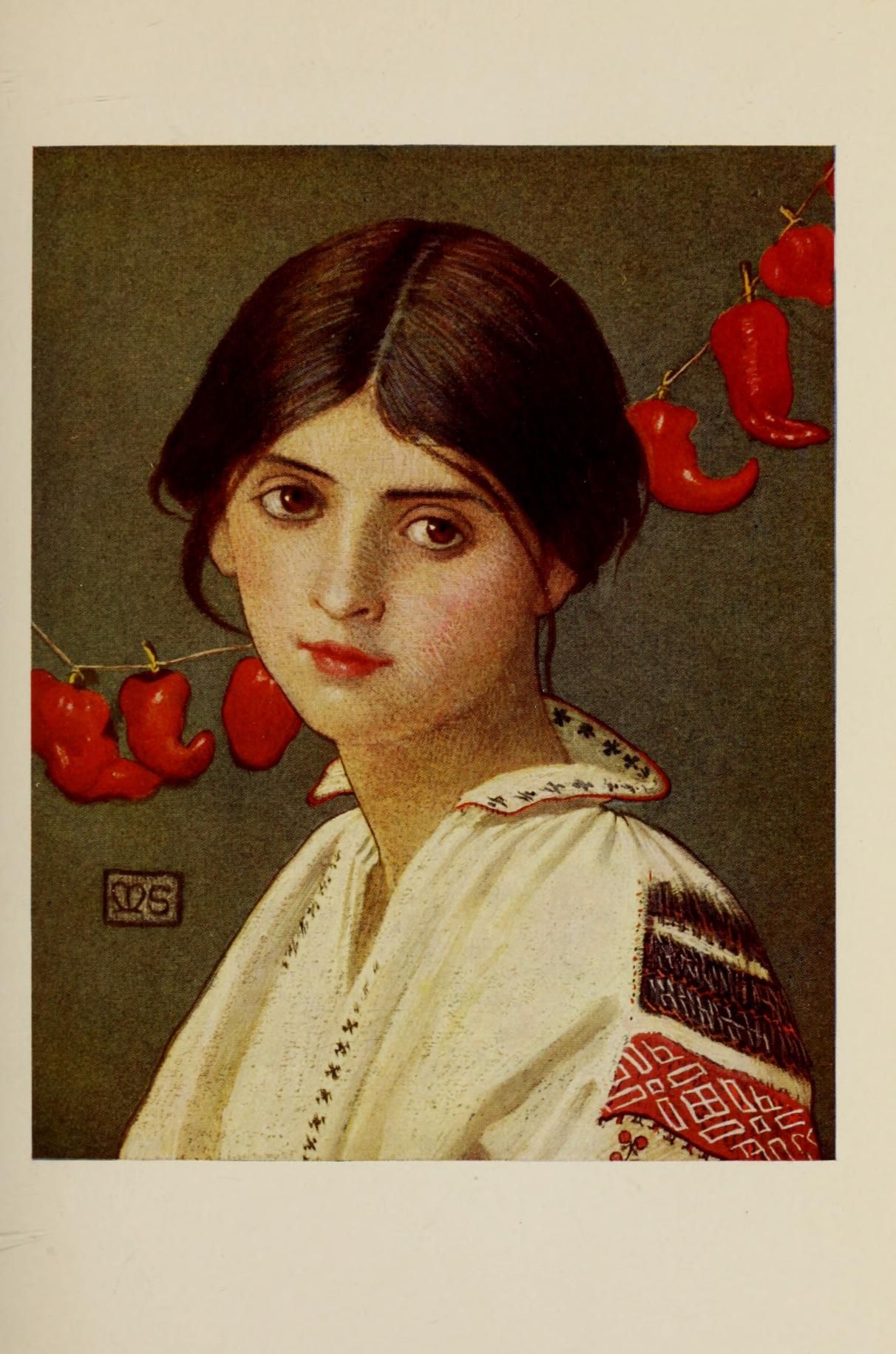
Marianne Stokes, A Rumanian Maiden, 1909

Marianne Stokes, Romania – Garlic Seller, 1909

Marianne Stokes Rumanian Children bringing Water to be Blessed in the Greek Church, Desze, 1909

Marianne Stokes, An Engaged Couple, ‘Misko and Maruska’ at Menguszfalva, 1909
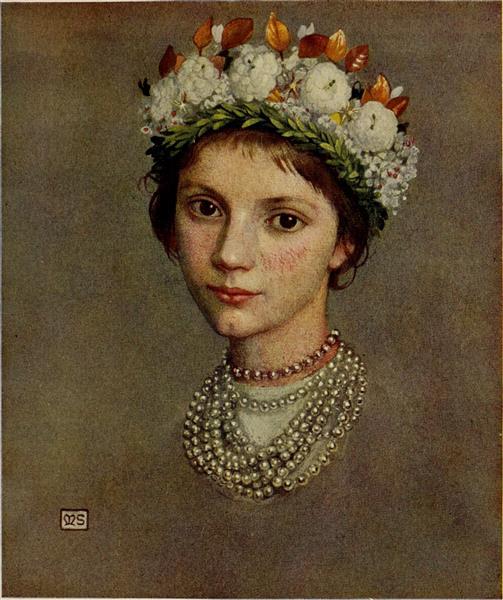
Marianne Stokes, The Confirmation Wreath, 1909

Marianne Stokes, The Bridal Veil, 1909
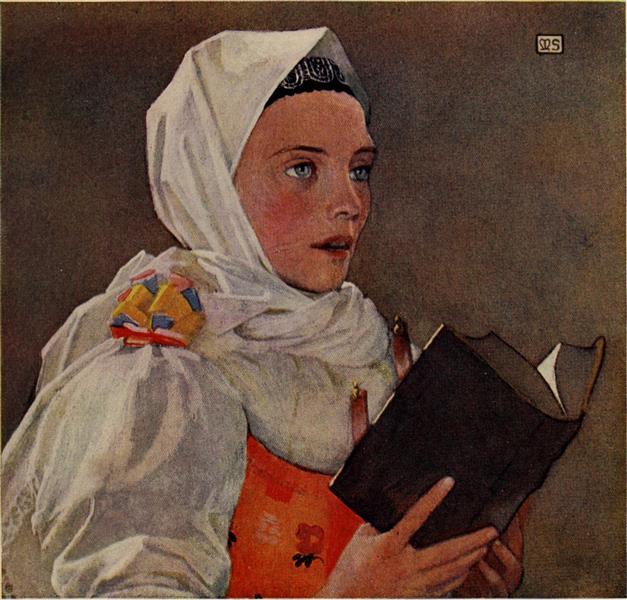
Marianne Stokes, Slovak Woman Singing a Hymn, 1909
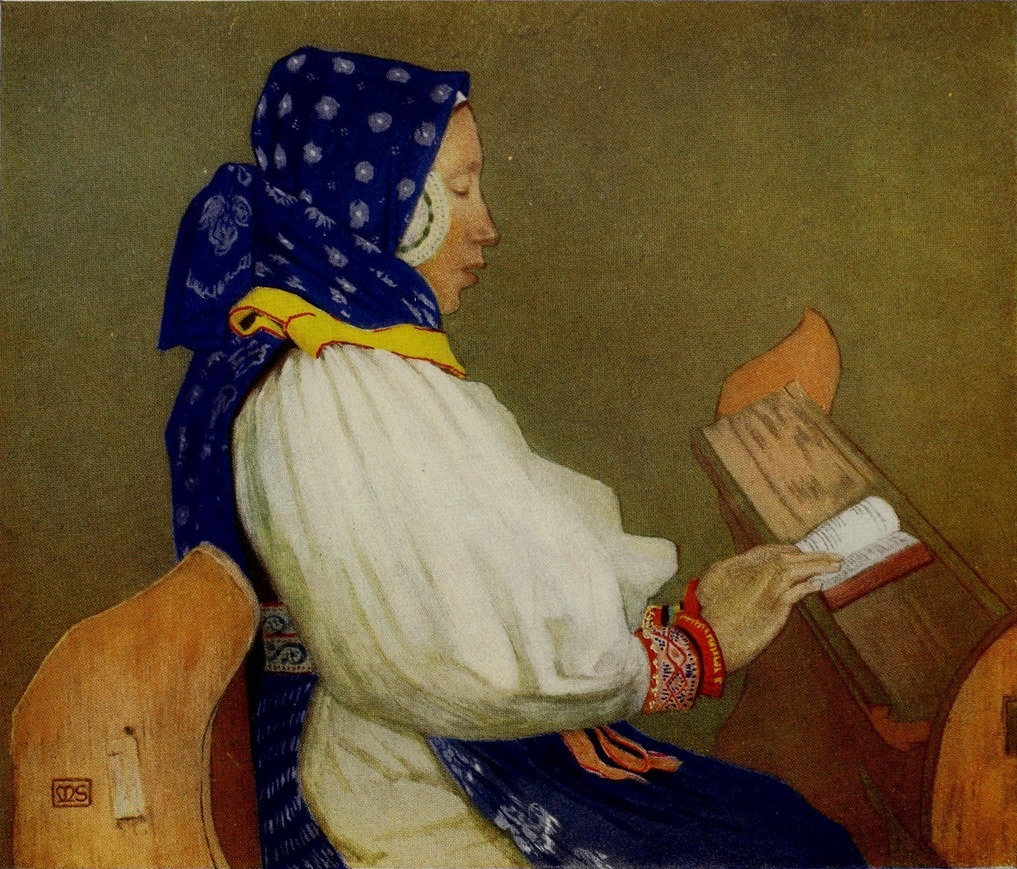
Marianne Stokes, A Slovak Woman at Prayer, Vazcecz, Hungary, 1907
Tags: 1900s, 1905., 1909, 20th century art, art, Austrian painter, girls, Hungarian girl, Hungary, Marianne Stokes, Painting, peasant, Rumanian girl, Slovak girls, The Little Peasant, traditional clothes, travel, vibrant colour, village
 Zlatá brána (Golden gate) is traditional game of Slovak children, Slovakia, 1928
Zlatá brána (Golden gate) is traditional game of Slovak children, Slovakia, 1928